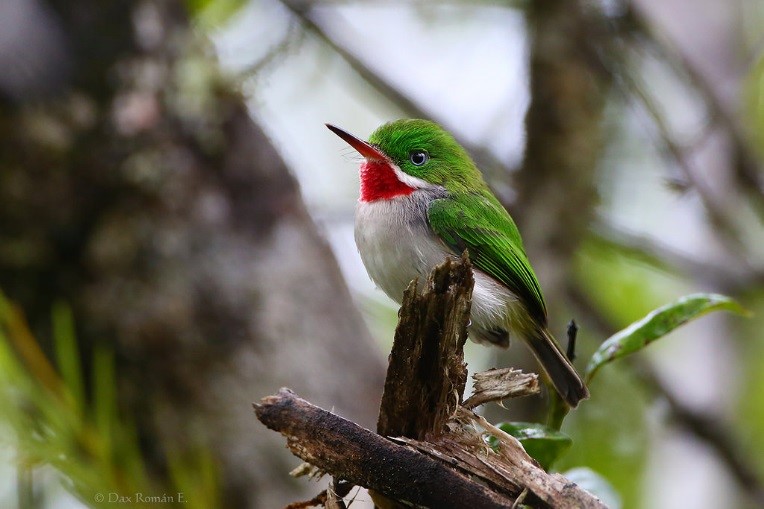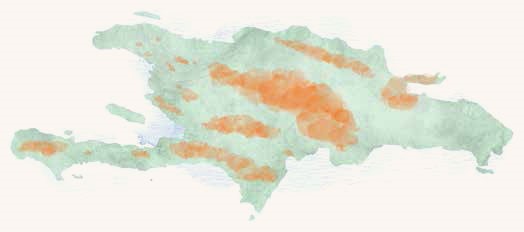Birdfinding.info ⇒ The more limited of Hispaniola’s two todies, Narrow-billed is locally common in humid montane forests and usually easy to find at sites such as Zapotén, Los Arroyos, the middle section of Alcoa Road, Cachote, and Ébano Verde Scientific Reserve. It can sometimes be found along the Rabo de Gato Trail, side-by-side with Broad-billed Tody. In Haiti, it is common at Pic Macaya and La Visite National Park.
Narrow-billed Tody
Todus angustirostris
Endemic to Hispaniola, where it occurs mainly in humid montane forests, and locally in other types of woodlands and at lower elevations.
Known from all the major mountain ranges of Hispaniola and some hilly lowland areas: e.g., Los Haitises National Park and the Samaná Peninsula.
Identification
Closely resembles the more widespread and familiar Broad-billed Tody, but differs in having a brighter white whisker streak, grayer breast, darker bill, and pale irises.
Underparts are mostly grayish white, darkest on the sides of the chest, with a pale yellow wash on the vent. Vivid pink tufts on its flanks are often covered by folded wings when perched.
The two Hispaniolan todies can often be distinguished at a distance by habitat and voice. Narrow-billed is mostly limited to montane forests, whereas Broad-billed is found in various lowland habitats, but they overlap in some foothill areas. (See below.)
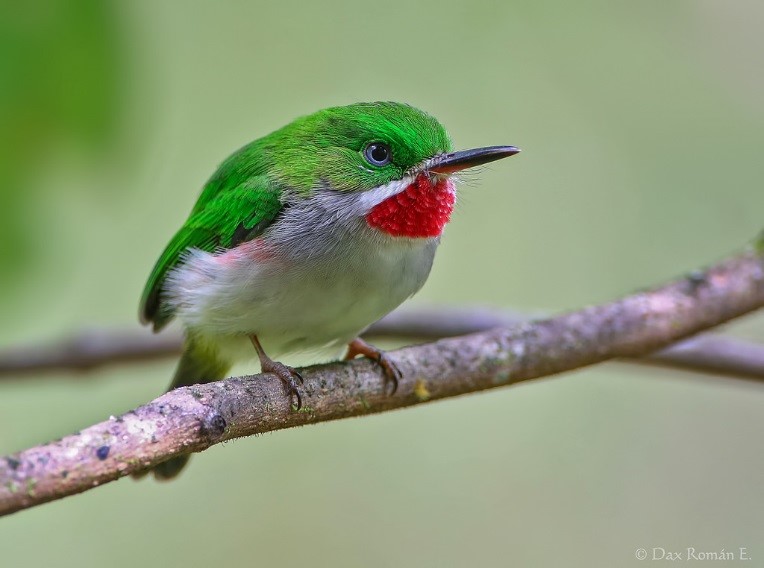
Narrow-billed Tody. (Cordillera Central, Dominican Republic; December 13, 2013.) © Dax M. Román E.
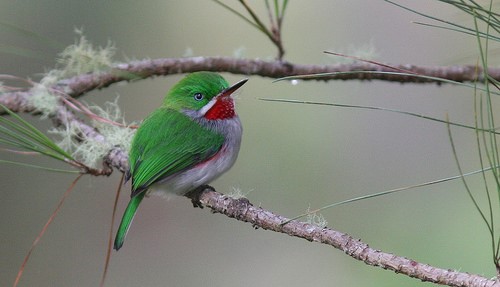
Narrow-billed Tody. (La Visite National Park, Haiti; February 20, 2014.) © Jim Tietz
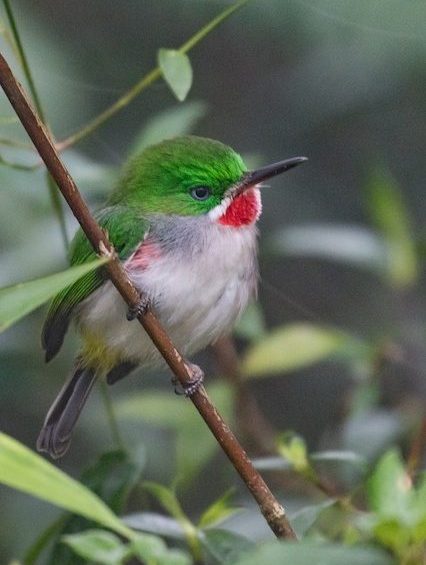
Narrow-billed Tody. (Zapotén, Dominican Republic; April 4, 2017.) © Robert Lewis

Narrow-billed Tody. (Ébano Verde Scientific Reserve, Dominican Republic; May 4, 2013.) © Dax M. Román E.
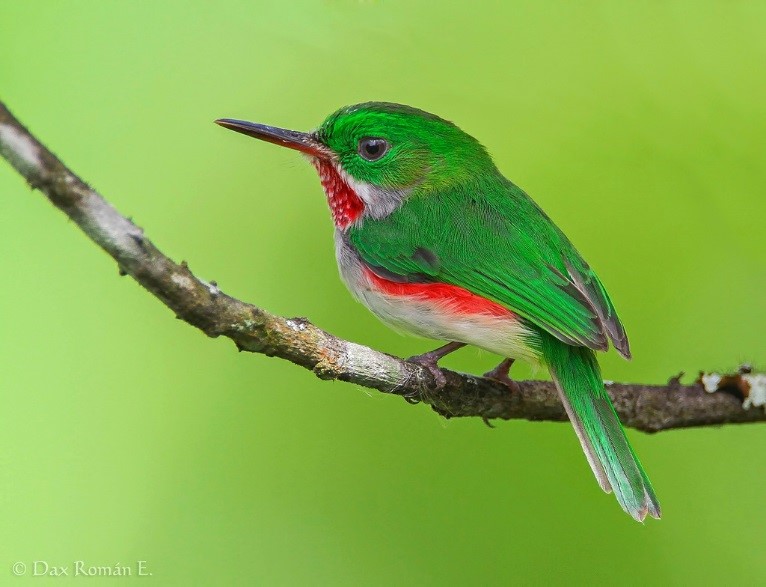
Narrow-billed Tody. (Arroyo Frío, Dominican Republic; June 2, 2012.) © Dax M. Román E.
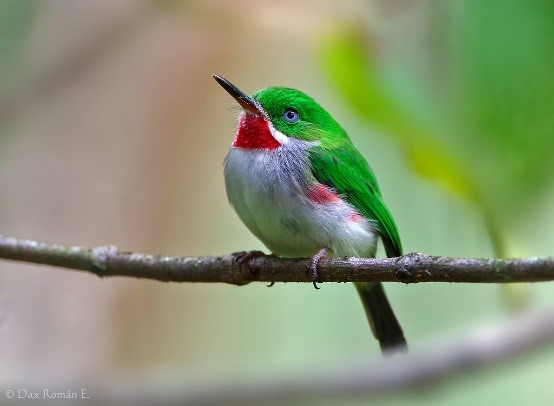
Narrow-billed Tody. (Ébano Verde Scientific Reserve, Dominican Republic; December 13, 2013.) © Dax M. Román E.
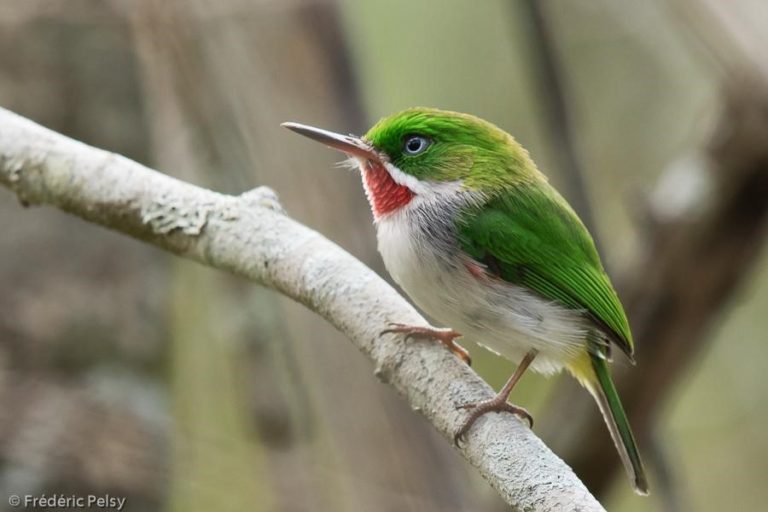
Narrow-billed Tody. (Rabo de Gato Trail, Dominican Republic; March 28, 2017.) © Frédéric Pelsy
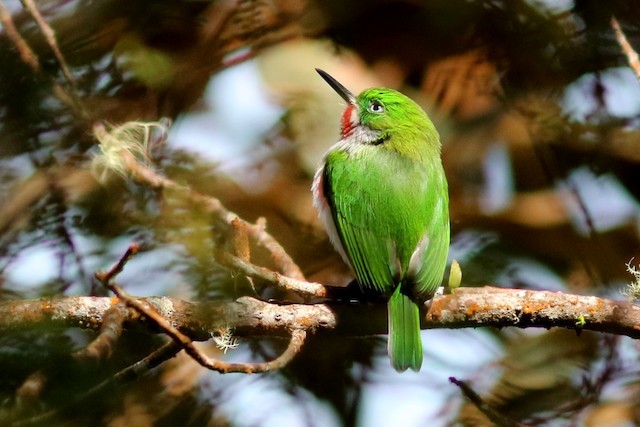
Narrow-billed Tody. (Zapotén, Dominican Republic; March 6, 2015.) © John Sullivan
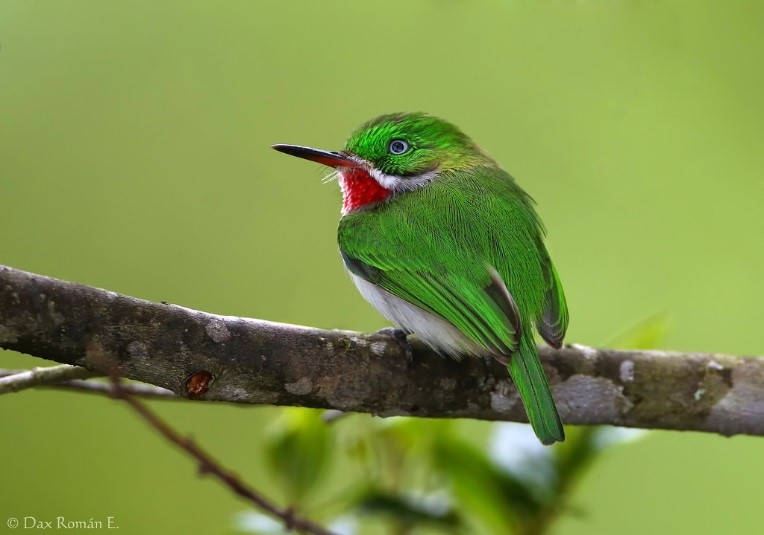
Narrow-billed Tody. (Ébano Verde Scientific Reserve, Dominican Republic; February 1, 2014.) © Dax M. Román E.
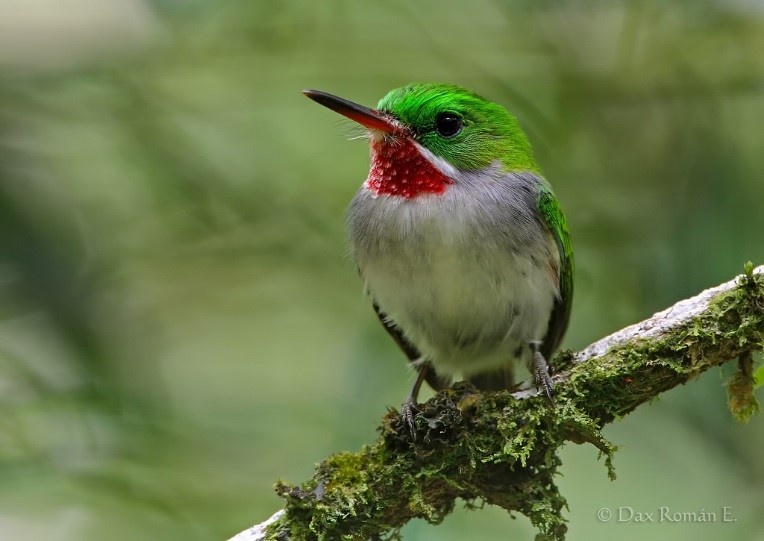
Narrow-billed Tody. (Cordillera Central, Dominican Republic; May 4, 2013.) © Dax M. Román E.
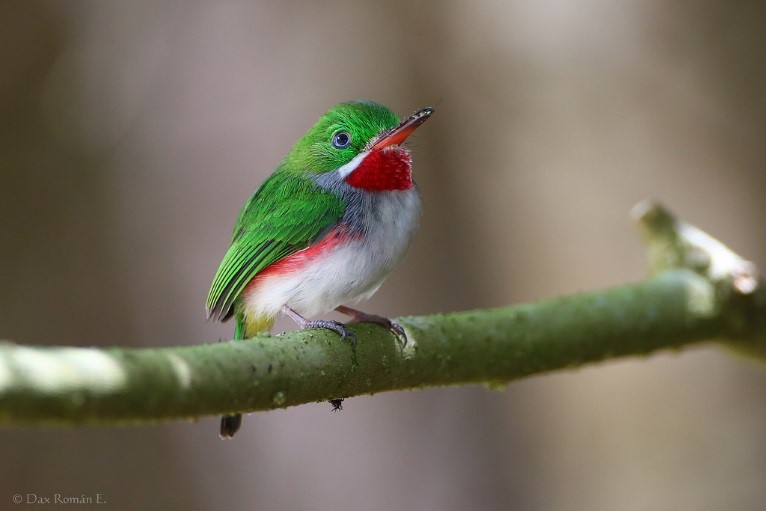
Narrow-billed Tody. (Ébano Verde Scientific Reserve, Dominican Republic; June 8, 2014.) © Dax M. Román E.
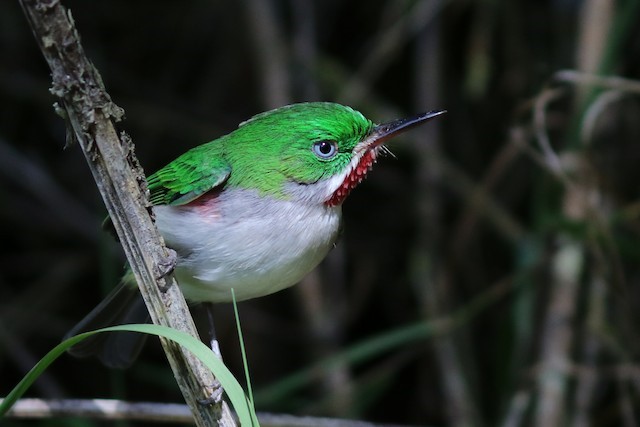
Narrow-billed Tody. (Zapotén, Dominican Republic; March 6, 2015.) © John Sullivan

Narrow-billed Tody. (Zapotén, Dominican Republic; April 10, 2015.) © Alan Van Norman
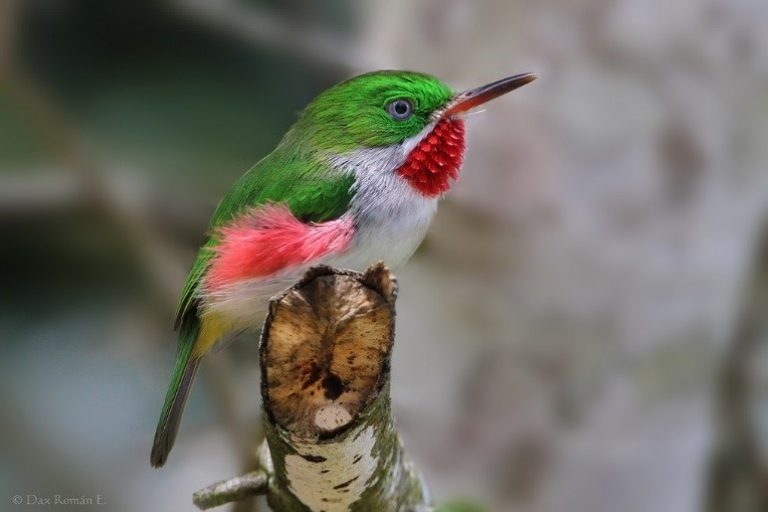
Narrow-billed Tody. (Ébano Verde Scientific Reserve, Dominican Republic; April 23, 2012.) © Dax M. Román E.
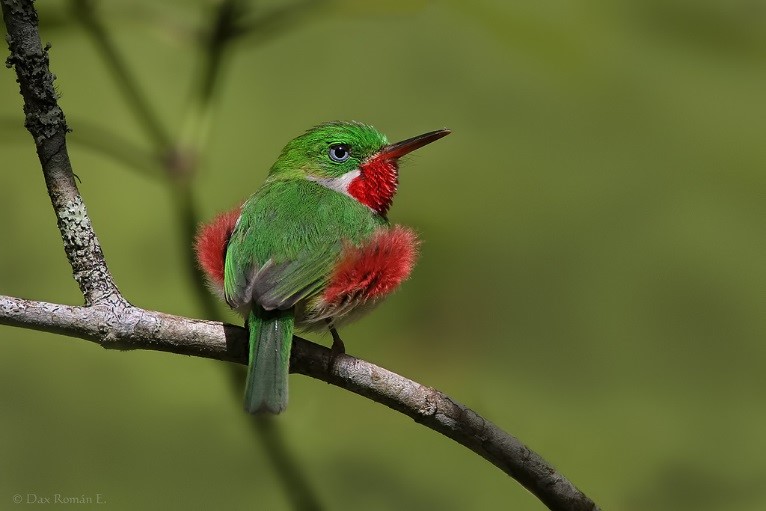
Narrow-billed Tody, with pink flanks on full display. (Cordillera Central, Dominican Republic; July 7, 2012.) © Dax M. Román E.
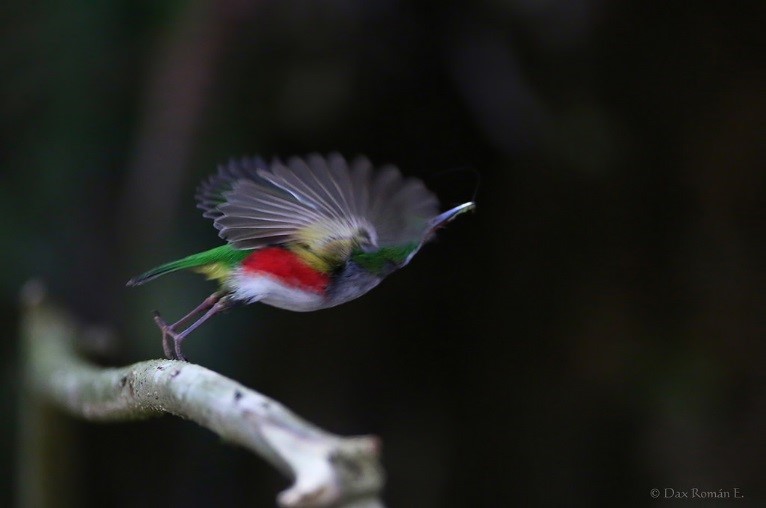
Broad-billed Tody. (Dominican Republic; January 5, 2013.) © Dax M. Román E.
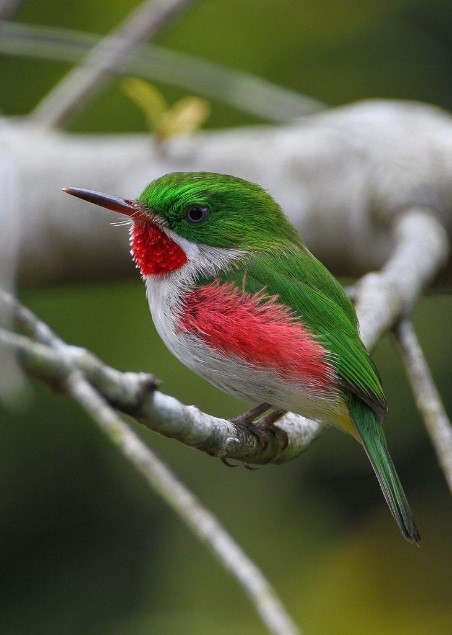
Narrow-billed Tody. (Ébano Verde Scientific Reserve, Dominican Republic; April 23, 2012.) © Dax M. Román E.

Narrow-billed Tody. (Ébano Verde Scientific Reserve, Dominican Republic; April 23, 2012.) © Dax M. Román E.
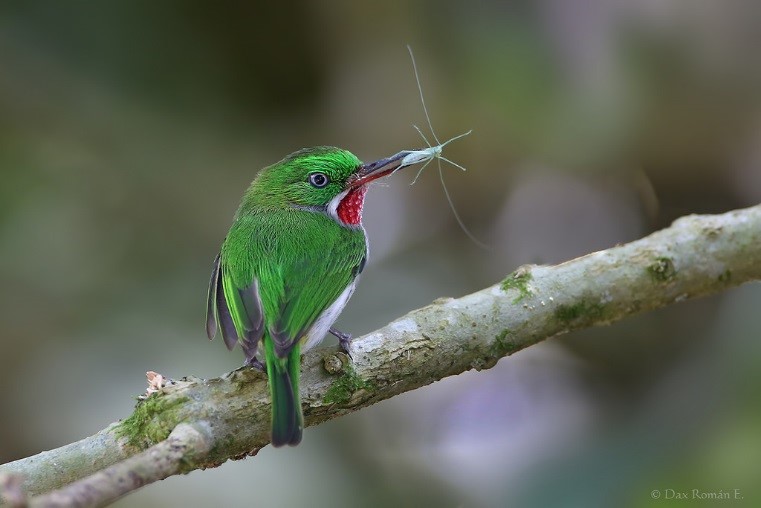
Narrow-billed Tody. (Ébano Verde Scientific Reserve, Dominican Republic; June 8, 2014.) © Dax M. Román E.

Narrow-billed Tody. (Ébano Verde Scientific Reserve, Dominican Republic; September 28, 2013.) © Dax M. Román E.
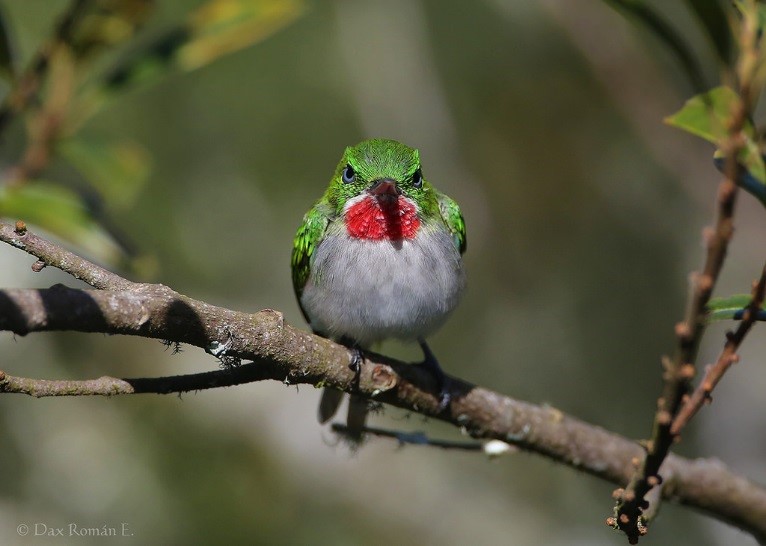
Narrow-billed Tody. (Ébano Verde Scientific Reserve, Dominican Republic; September 28, 2013.) © Dax M. Román E.
Cf. Broad-billed Tody. Broad-billed and Narrow-billed Todies are most readily identified by voice. Habitat is often a strong clue, although there is significant overlap in some areas. Visual identification is possible, but easy to get wrong.
Overall Plumage Tone: The two species share the same overall plumage pattern, but differ in the tone of their coloration. Narrow-billed is “colder”: deep green above and grayish-white below. Broad-billed is more yellowish throughout: i.e., yellowish-green above and yellowish-white below. Both species can show pink sides, but this is usually less extensive and redder on Narrow-billed.
Whisker Mark: Narrow-billed has a prominent, crisply defined white whisker streak that contrasts with the cold gray color of its chest. Broad-billed also has a whisker streak, but it typically contrasts less with the color of its chest.
Bill: Their bill colors are somewhat different. Narrow-billed’s bill is mostly blackish, with a small amount of red toward the base of the lower mandible. Broad-billed’s lower mandible is all red and its upper mandible is partly red, but blackish on the upper surface.
Eyes: Narrow-billed has white irises, whereas Broad-billed’s eyes are usually all-dark.
Notes
Monotypic species.
References
Alas & Colores: Narrow-billed Tody (Todus angustirostris), https://alasycolores.com.do/en/aves/chicui.
eBird. 2018. eBird: An online database of bird distribution and abundance. Cornell Lab of Ornithology, Ithaca, N.Y. http://www.ebird.org. (Accessed October 6, 2018.)
Kepler, K.A., and G.M. Kirwan. 2017. Narrow-billed Tody (Todus angustirostris). In Handbook of the Birds of the World Alive (J. del Hoyo, A. Elliott, J. Sargatal, D.A. Christie, and E. de Juana, eds.). Lynx Edicions, Barcelona. https://www.hbw.com/node/55815. (Accessed November 29, 2017.)
Latta, S., C. Rimmer, A. Keith, J. Wiley, H. Raffaele, K. McFarland, and E. Fernandez. 2006. Birds of the Dominican Republic and Haiti. Princeton University Press, Princeton, N.J.
Overton, L.C. 2011. Narrow-billed Tody (Todus angustirostris), version 1.0. In Neotropical Birds Online (T.S. Schulenberg, ed.). Cornell Lab of Ornithology, Ithaca, N.Y. https://doi.org/10.2173/nb.nabtod1.01.
Raffaele, H., J. Wiley, O. Garrido, A. Keith, and J. Raffaele. 1998. A Guide to the Birds of the West Indies. Princeton University Press, Princeton, N.J.
